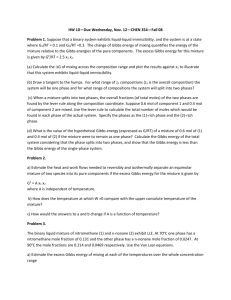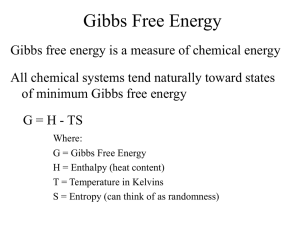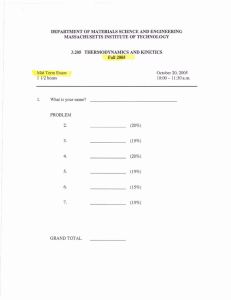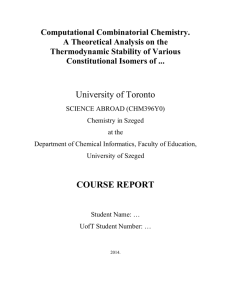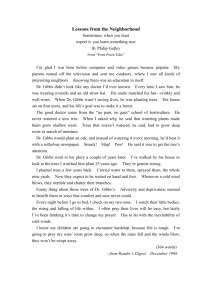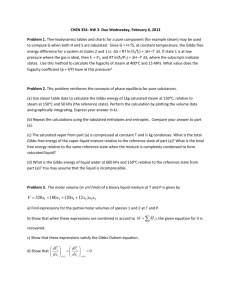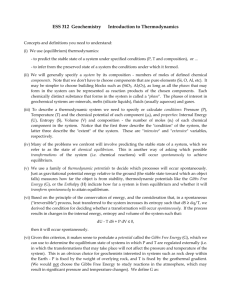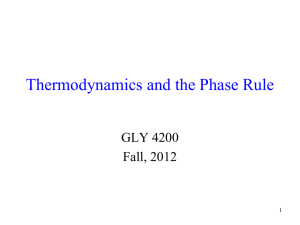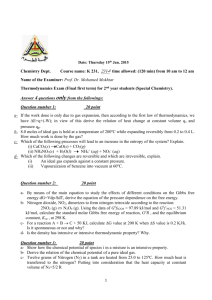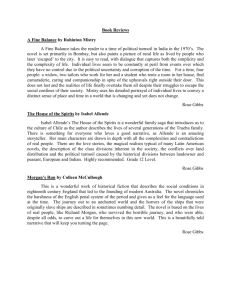HW 9-Spring 2014
advertisement
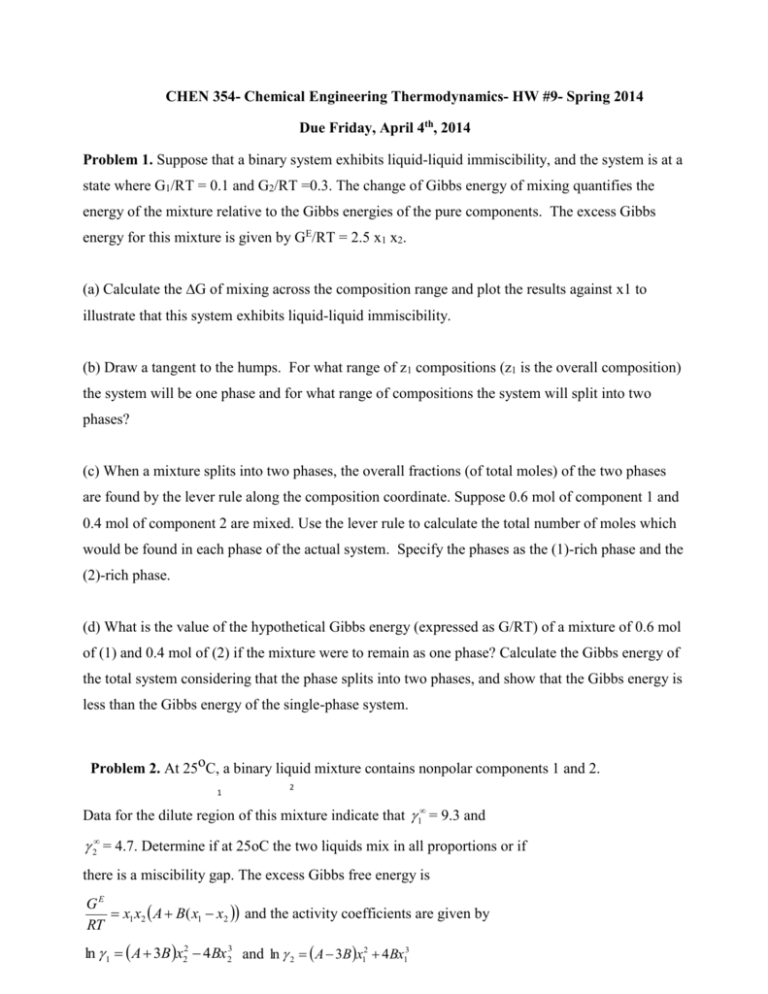
CHEN 354- Chemical Engineering Thermodynamics- HW #9- Spring 2014 Due Friday, April 4th, 2014 Problem 1. Suppose that a binary system exhibits liquid-liquid immiscibility, and the system is at a state where G1/RT = 0.1 and G2/RT =0.3. The change of Gibbs energy of mixing quantifies the energy of the mixture relative to the Gibbs energies of the pure components. The excess Gibbs energy for this mixture is given by GE/RT = 2.5 x1 x2. (a) Calculate the ∆G of mixing across the composition range and plot the results against x1 to illustrate that this system exhibits liquid-liquid immiscibility. (b) Draw a tangent to the humps. For what range of z1 compositions (z1 is the overall composition) the system will be one phase and for what range of compositions the system will split into two phases? (c) When a mixture splits into two phases, the overall fractions (of total moles) of the two phases are found by the lever rule along the composition coordinate. Suppose 0.6 mol of component 1 and 0.4 mol of component 2 are mixed. Use the lever rule to calculate the total number of moles which would be found in each phase of the actual system. Specify the phases as the (1)-rich phase and the (2)-rich phase. (d) What is the value of the hypothetical Gibbs energy (expressed as G/RT) of a mixture of 0.6 mol of (1) and 0.4 mol of (2) if the mixture were to remain as one phase? Calculate the Gibbs energy of the total system considering that the phase splits into two phases, and show that the Gibbs energy is less than the Gibbs energy of the single-phase system. Problem 2. At 25oC, a binary liquid mixture contains nonpolar components 1 and 2. 1 2 Data for the dilute region of this mixture indicate that 1 = 9.3 and 2 = 4.7. Determine if at 25oC the two liquids mix in all proportions or if there is a miscibility gap. The excess Gibbs free energy is GE x1 x2 A B( x1 x2 and the activity coefficients are given by RT ln 1 A 3B x22 4Bx 23 and ln 2 A 3B x12 4Bx13
